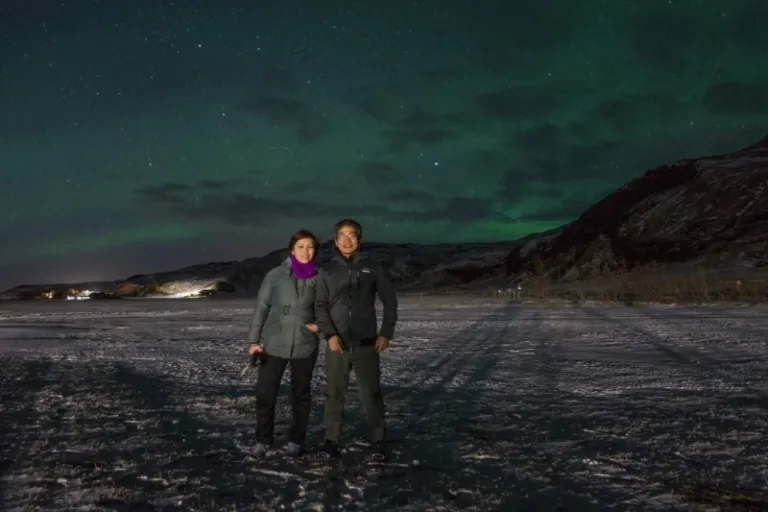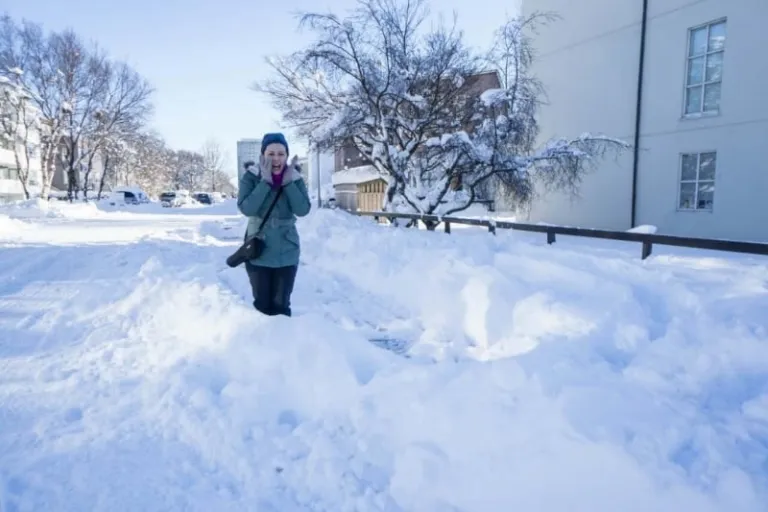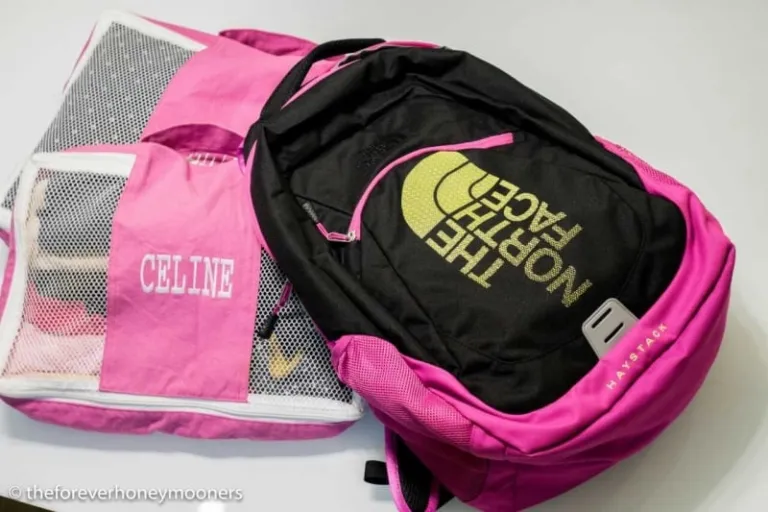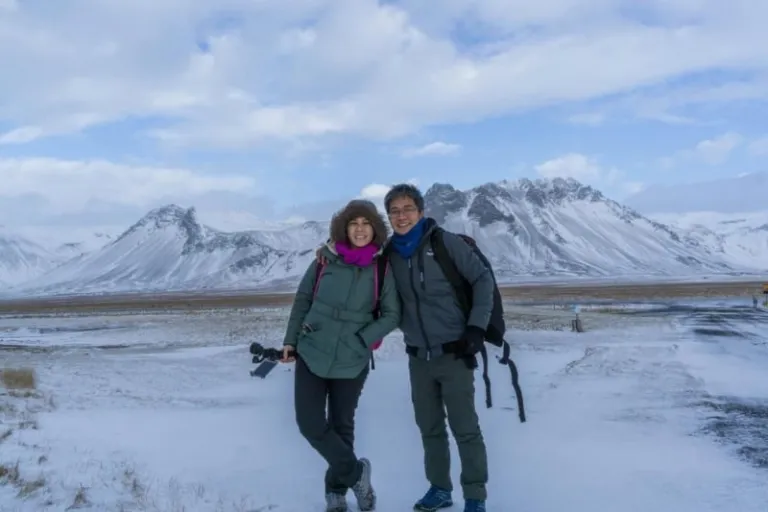The only plastic we need for travel.
Pinoy’s Guide to Surviving Winter in Iceland: 7 Clothing Essentials to Pack

Contributed by The Forever Honeymooners
This trip was a surprise from Jaysen. Initially, I wasn’t sure if I should be ecstatic or annoyed. He divulged his plan one month before the trip. Being a control freak, I panicked knowing we probably don’t have appropriate gears for this trip. And we only have a month to prepare. Take note, I call it gears, because it is exactly that, not merely clothing. To his credit, Jaysen has been doing his research on things that we might need and already earmarked them pending (my) fitting. Good job to this guy!
Also read: Iceland Too Expensive? Here’s How to Travel There on a Tight Budget
Anyhow, I’ve pored through several blogs saying that winters in Iceland are mild. Don’t believe them! Or at least, take it with a grain of salt. Look for context, if they are comparing it to Canadian winters that can go as low as -30 °C then, it is milder. But for someone from a tropical country with low tolerance for cold like myself, anything under 5 °C is brutal. We anticipated the temperature to be around 1 °C to anywhere -5 °C based on history so prepped for that. An important thing to understand is weather is finicky, especially in Iceland. You can go through four seasons in a day. It can be -8 outside but the sun is shining so bright you get a sunburn.
If there are two things I would advise anyone going to Iceland in the winter it would be to invest in good quality thermal wear and gears and waterproof everything.
On the first bit, I know quality outdoor wear can be expensive and it is tempting to buy knock-offs from the tiangge. But since you’ve already gone as far as booking your ticket, you don’t want to ruin the experience by just shivering the entire time or worse, staying in the car to keep warm. Iceland is best experienced outdoors. You will walk on glaciers, trek to look for waterfalls, hike down to the edge of the Atlantic Ocean, add the gust of wind and wind chill factor to the already freezing temperature, and you will have to anticipate at least double the recorded temperature. It’s the “real feel” that matters, in all things. We have our stash of winter wear composed of coats, thermals, and boots, but these were used in an urban setting where we walk for a few minutes and dash into a cafe, museum, or train where it is warm. In Iceland, you will be outside most of the time. There are no trains to take you around and the bus system is not as efficient as in other European countries. So if you want to go somewhere, the first option is to walk. Most likely, if you go during winter, you will be outside most nights in freezing temperature for hours on end to hunt for the elusive northern lights.

Aurora hunting
Here are the things we brought with us and we’re happy to say we’re back in the Philippines, colds-free (fingers crossed!):
1. Thermal underclothing from Uniqlo

Our base layer and my gloves which weren’t too helpful
We bought new ones that are Extra Warm. Compared to the regular Uniqlo thermals, it lived up to its name. This will serve as your base. Whatever you will wear outside, wear this first. There are other brands that sell thermals like Columbia and North Face, but for value, we chose Uniqlo. A shirt or leggings sell at less than a thousand each.
2. Fleece second layer

Different layers. Fleece, thermo ball Jaysen scored in Taiwan, and my favourite jacket from Columbia.
Some brands have what they call tandem jackets wherein a fleece second layer is detachable from the outerwear. We got individual fleece jackets so we can have options for variability. Ours were from Columbia. Make sure you get a size that fits you well. Thermal wear works best if it is close to your body so it can retain heat efficiently. This means, sizing is troublesome for Jaysen (he is “petite”, you know). The smallest male size was still loose on him, so he ended up wearing one made for females. But hey, if it works, then no one will ever know.
3. Outer jacket

Knee deep in snow. Heaviest snow fall in Iceland since the 1930s.
Some brand will recommend a thermoball plus a waterproof jacket. I opted for a somewhat 2-1 jacket from Columbia. It’s kind of fluffy like a thermoball but it has the patented Omni Heat thermal reflective which is supposed to keep you extra warm. It is also water-resistant. For me, this was my best buy. It’s the priciest of all we’ve purchased but it was so worth it. It kept me warm through Iceland’s biggest storm in years and heaviest snowfall in decades. So yeah. It also comes with a hood that keeps my head and ears warm. I barely used my beanie.
Also read: The Ultimate 10 Day Iceland Road Trip Itinerary
4. Pants
Get those thermal ones. They are available in Columbia and North Face, using different technologies. For Columbia, it used the patented Omni Heat thermal reflective (foil looking lining) while North Face is fleece-lined. I wished I used the Columbia pants. Jaysen was using the pants from Columbia and he said it kept him warm enough so he was just wearing two layers, the thermal base layer and the pants. I wore the North Face trousers which didn’t keep me warm enough especially at night even if I wore three layers, thermal base, fleece, and pants. A huge drawback is North Face’s Asian sizing. My pants was Asian 8, which means it is the largest size for women. It fit me well but it is slim fit plus two layers of thermals so it limited my range of movement during hiking, especially when climbing over boulders. I would have preferred Columbia’s Saturday Trail pants as it has a bootleg cut which would have given me more freedom of movement especially on those mountain treks. But, Columbia ran out of my size (size 6) across the entire Metro Manila. Oh well.
5. Socks and gloves

My trekking shoes from North Face and thermal socks from Marks and Spencer
Get good quality thermal wool socks and gloves. After walking for hours in snow, you won’t be able to feel your toes, your hands will hurt from the cold. You want to go home with complete digits, right? In hindsight, I could’ve gotten better gloves. These are old ones which aren’t waterproof. In the end, I resorted to using my bare hands to help me navigate tricky trails and stick them in my jacket’s pockets when they get too cold.
6. Scarf and face protection

Stormy day in Iceland. Those bandanas helped keep our faces warm.
What we got was actually some sort of a bandana looking thing to serve as a scarf. You probably won’t think about it, you’d think my regular scarf will do. Not. If you bring your thick scarf, it will be cumbersome given that you are already wearing several layers of clothing. Plus, scarves are loose ended which will pose a danger when the wind is whipping and it might impede your vision. So no. We really didn’t think about that when we bought this accessory from Columbia. It’s supposed to keep your neck warm but it can also serve as protection for your face. You can pull it up to cover your face once the wind gets too cold and your face hurts. It is lined by the same patented Omni Heat thermal reflective. This was really helpful for us as after several minutes out when the wind is strongly blowing add to that the splash from the crashing waves, it can get frigid and our faces started to get numb. It kind of prevented our noses from falling off. This also is a great space saver compared to regular scarves.
Also read: Northern Lights in Iceland: It’s Now or Never!
7. Shoes
Get good shoes; shoes made for trekking with good grip and are water-repellent. You will be walking on grass, snow, and ice. Sometimes, the snow can get knee-deep if you are not careful. You want to keep your feet dry, because nothing ruins a day than soggy socks and freezing feet. If you can find a source, buy those rubber ice grips you can put over your shoes. This will help prevent you from slipping on ice. Unfortunately, we didn’t have these, so I stuck to our guide for dear life when we trek or do the penguin walk. We got North Face trekking shoes and it served us well. No complaints there. Don’t even think of wearing your Stan Smiths or Nike trainers. No. Just no. Unless you want to go home in crutches, or as our guide always reminds us, not at all.
On the second one, need I say more? Snow doesn’t stay snow forever. It becomes water. Wet clothes with sub-zero temperature can potentially freeze you or make you really, really cold. Opt for at least, water-resistant clothing and gears. It will also be wise to water-proof important things like passports, mobile phones, tickets, etc. There are times when you will walk close to a waterfall, fall in the snow or stand in the rain. We want our passports dry, you know, for that time when we have to go home.

All mine
When packing for Iceland, it is best to pack light. You don’t really need a lot of jackets and shoes. It’s good that this is not a fashion blog, else I’ll be posting the same #ootds for more than a week! Unless I include the base layers which are all the same: OOTD Pair No. 1, 2, 3… Black Extra Warm Uniqlo long sleeves and leggings. Kidding aside, it would be best to pare it down to the basics if you join tours, especially those with overnight arrangements, the operator will only allow for one small bag for each person (either a back pack or a small carry-on). There are storage lockers around the city but they are a bit expensive. You’ll be surprised that you don’t really need so much stuff, plus it’s easier to get around with a smaller bag.
Also read: 5 Things that Will Show You Why Iceland is the Best Country in the World

Us in full battle gear
P.S. Don’t forget to bring your bathing suit! You will surely enjoy thawing out in the many hot springs around.
P.P.S. Use moisturisers and sunblock generously, please!
Enjoy!
xoxo,
Published at
About Author
Celine Stephanie Uy
Subscribe our Newsletter
Get our weekly tips and travel news!
Recommended Articles
14 Best Credit Cards for Travel in the Philippines My 10-Day Southern Vietnam Backpacking Trip for Less Than ₱15k 10 days in Southern Vietnam with less than ₱15k budget. Learn how this Filipina did it!
10 Family Outing Ideas in Metro Manila Under ₱500 Looking for a weekend bonding with the family under ₱500? Head to these places, pronto!
10 Long Weekends in the Philippines in 2023 Book those flights ASAP.
10 Things to Do in Clark for Your Next Weekend Getaway The ideal weekend destination for every traveller.
Latest Articles
Mother’s Wonderland: Quezon Province’s Fantasy Theme Park Explore a magical theme park in Tayabas filled with nature, art, and fantasy
Kayangan Lake in Coron, Palawan: Everything You Need to Know Dive into the crystal-clear magic of Kayangan Lake, the crown jewel of Coron, Palawan!
Dingalan Travel Guide: Nature Spots to Discover Now Underrated coastal gem in Aurora
What to Eat in Bicol: Iconic Dishes and Treats, and Unique Pasalubong You’ll Love Spice up your foodie adventure with iconic Bicol dishes and must-try pasalubong!
Top Travel Trends in the Philippines for 2025 New spots, tips, and trends

